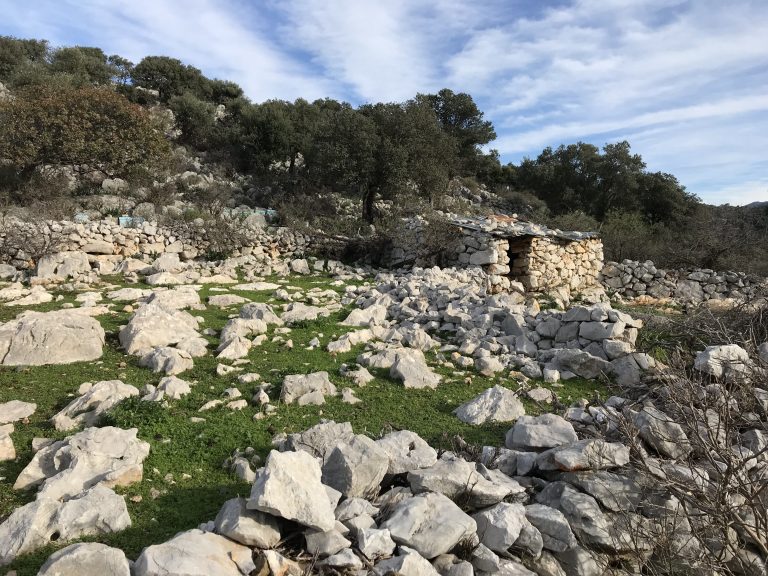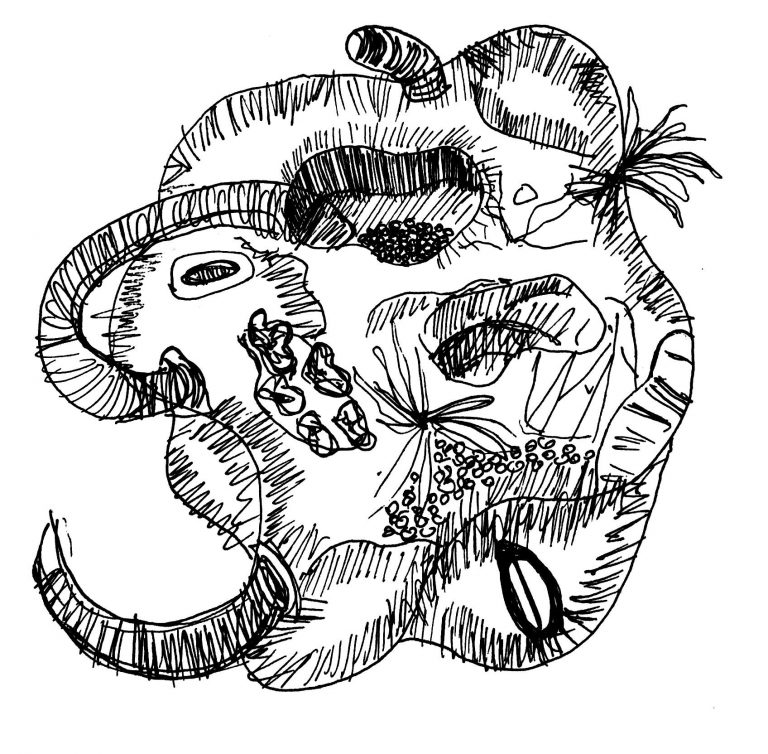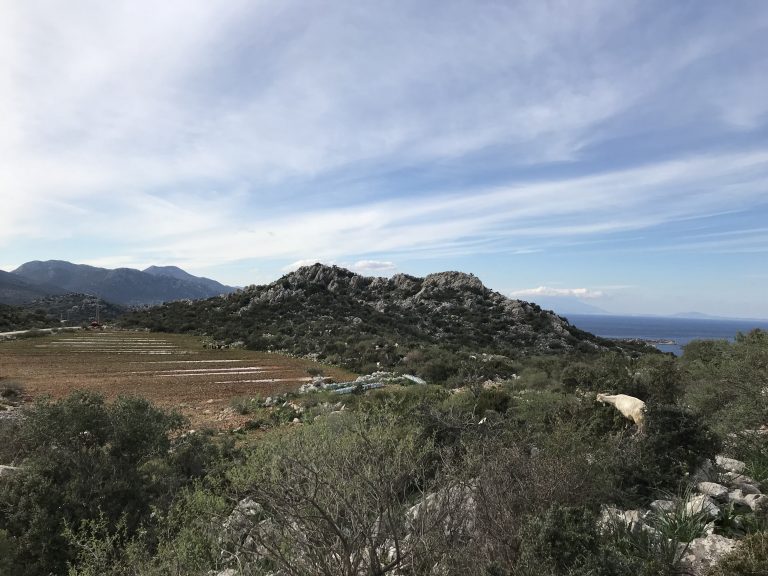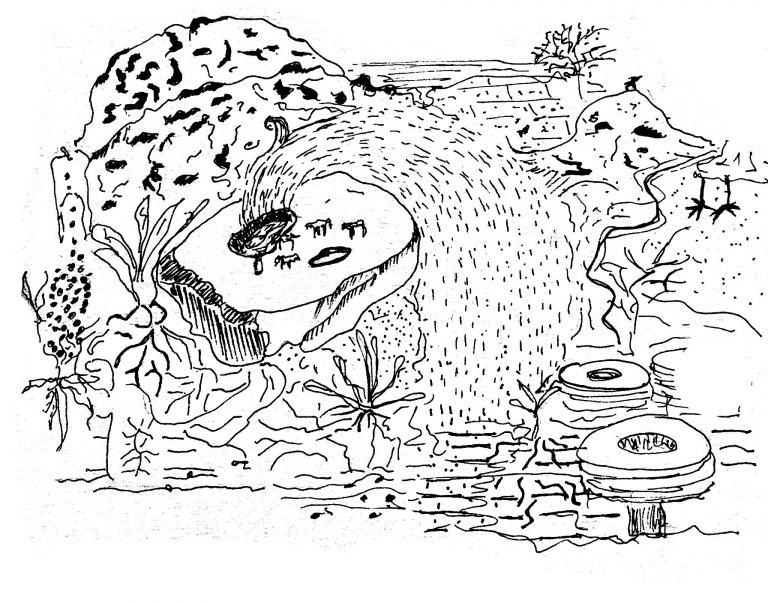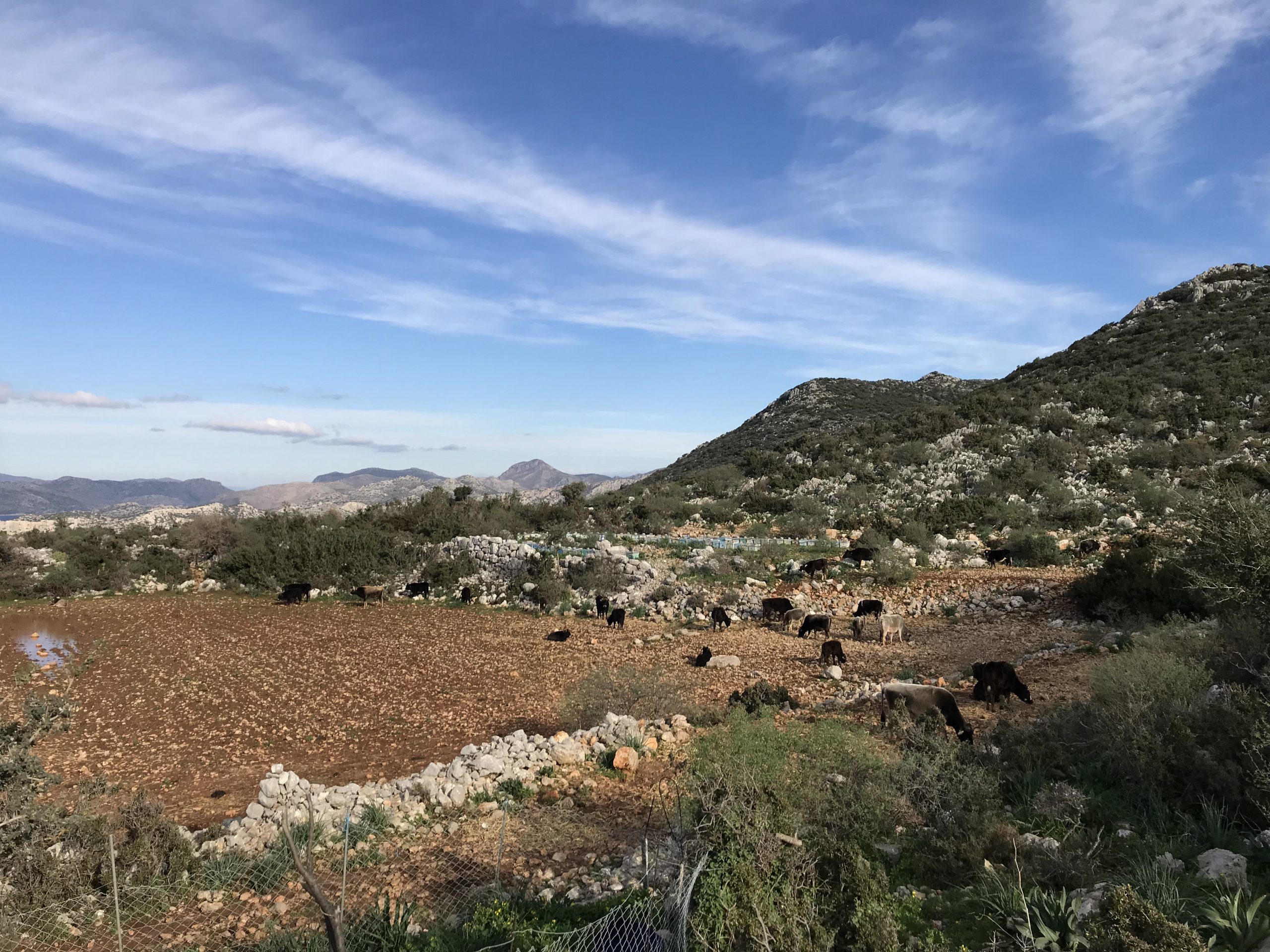
Indigenous Language of Taşlıca: A Case of Interspecies Communication
Eylül Şenses
Since the first forms of agriculture originated in 11,000 BC in the Fertile Crescent and Anatolia, various tools and methods have been developed to cultivate the land. Traditions and cultures have flourished through these interactions with the soil and the surrounding environment. Over generations, the Indigenous Production Landscapes (IPLs*) provided food and habitat for countless species, and hosted great biodiversity.
The industrial agricultural methods, allegedly used in order to increase production, have eventually caused a general loss of Indigenous methods of food cultivation and led to monocultures. Yet, around the world there are still landscapes hosting Indigenous production practices that embrace a holistic vision and sustain a wider ecosystem shared with other species.
Scattered around Anatolia are few remnants of ancient agricultural practices that have been ongoing for thousands of years. These Indigenous production landscapes are living heritage and they carry the knowledge, experience, and methods that can enable us to review agricultural practices and production. Based on the preliminary research carried out within the course “Aesthetics of Architectural and Urban Research” conducted by Aslıhan Demirtaş at Kadir Has University and “Indigenous Production Landscapes Applied Course” by Doğa Association, this project aims to investigate these Indigenous ways of production and coexistence. Focusing on Taşlıca village in the Bozburun Peninsula, the project explores the rooted interrelations among various species and the interspecies communication methods in the Indigenous production landscapes of Anatolia.
*IPL is a term used by Doğa Association (Turkey) for identifying production basins of Anatolia, which results from ancient forms of practices for sustaining land and waterscapes.

Eylül Şenses graduated from the Architecture Department of Middle East Technical University (METU), Ankara, Turkey, and she participated in a one-year exchange program at Universidad Politécnica de Madrid (UPM), Spain. After taking part in various projects with the design collective called Plankton Project, she worked as a program coordinator in TAK Kartal, a creative hub empowering collective decision-making processes on an urban scale. She worked as operations and public programme associate at the 4th Istanbul Design Biennial realized by the Istanbul Foundation for Culture and Arts (IKSV). She received a master’s degree from the architecture and urban studies program, Kadir Has University (KHAS). She took part in research and exhibition projects within SALT and KHAS. Recently she has worked as a public programme associate at the 5th Istanbul Design Biennial and has been part of The Young Curators Group established within the biennial. She is one of the founding members of the Urban Studies Cooperative (Urban.koop), a collective network of urbanists, artists, and creatives who are willing to co-develop urban policies, programs, and projects for the local communities.
(photo: Deniz Gün)
Project Credits
Videographer
Ebru Gümrükçüoğlu
Sound designer
Hakan Atmaca
Acknowledgments
Aslıhan Demirtaş, Deniz Ova, Oğulcan Aksoy, Aslı Dinç, Irmak Erbaydar, İlayda Tuna, Pınar Yazdıç, Pınar Yalçınkaya, Can Koçak, Yiğitcan Erdoğan, Aykut Şabanoğlu, Dr. Reimar Volker (Goethe-Institut Istanbul)

